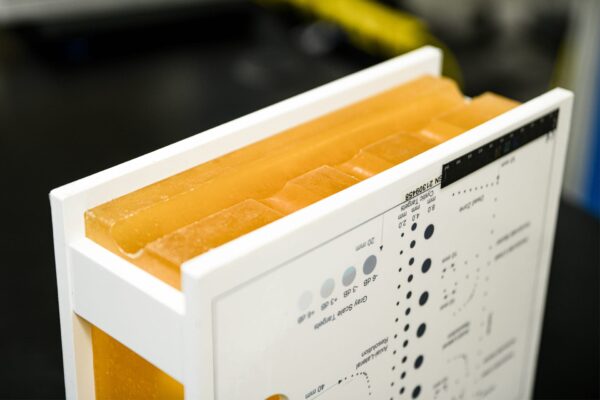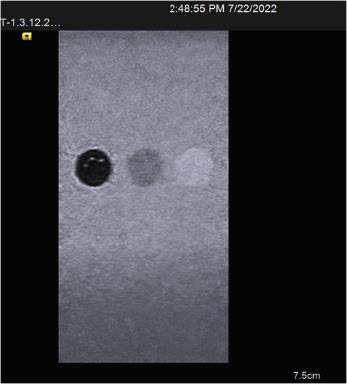The Benefits of Tissue-Mimicking Ultrasound Phantoms
 Tissue-mimicking ultrasound phantoms (TMPs) are designed to simulate the acoustic properties and texture of human tissue, providing a realistic and controlled environment for ultrasound practitioners and researchers. They’re invaluable tools in the field of medical imaging, revolutionizing the way we train technicians, ensure quality, and conduct research in ultrasound technology.
Tissue-mimicking ultrasound phantoms (TMPs) are designed to simulate the acoustic properties and texture of human tissue, providing a realistic and controlled environment for ultrasound practitioners and researchers. They’re invaluable tools in the field of medical imaging, revolutionizing the way we train technicians, ensure quality, and conduct research in ultrasound technology.
As ultrasound imaging technology evolves, so must our understanding of its capability in the field. TMPs offer the opportunity to refine ultrasound imaging practices so that they fully exploit the cutting-edge advancements pushing ultrasound to the forefront of medicine today.
The advantages of TMPs
To understand the value TMPs bring to ultrasound, it’s important to look at the features that make them such indispensable tools:
- Realistic tissue-like characteristics. TMPs excel in mimicking the acoustic properties and texture of human tissue. They’re engineered to resemble specific anatomical structures, enabling practitioners to refine ultrasound techniques on phantoms that behave realistically.
- Customizable for diverse simulations. TMPs can be tailored to simulate a wide range of anatomical variations and pathologies, allowing healthcare professionals to practice specific scenarios they are likely to encounter in real-life situations.
- Longevity and stability. TMPs are durable and stable, allowing for repeated use without compromising their quality. Researchers can rely on TMPs to maintain their tissue-mimicking properties consistently, ensuring reliable and reproducible results.
- Cost savings. Compared to using human or animal models, TMPs offer a cost-effective alternative for ultrasound training and research. Institutions can reduce expenses associated with live tissue models, as TMPs provide a more accessible, affordable solution.
By harnessing the benefits of TMPs, healthcare professionals can enhance their skills, ensure consistent image quality, and explore innovative techniques that ultimately improve patient care. As ultrasound technology continues to advance, TMPs are at the forefront of innovation and improved diagnostic accuracy. Here’s how.
Benefit 1: Enhanced training
Ultrasound diagnostics require a precise approach to capture viable images. It starts with technician training, and TMPs play a crucial role in it. Phantoms offer a realistic, controlled environment to practice and refine ultrasound skills by accurately mimicking the acoustic properties and texture of human tissues. They are, quite literally, a perfect hands-on replication of clinical scenarios.
Using TMPs, ultrasound technicians in training can perform various scanning techniques, learn proper probe handling, and practice image interpretation. This immersive training not only builds confidence, but also allows practitioners to familiarize themselves with different anatomical structures and pathologies. By experimenting on phantoms, practitioners can explore innovative imaging approaches, optimize scanning parameters, and evaluate the feasibility of emerging technologies.
 Benefit 2: Quality assurance
Benefit 2: Quality assurance
The same properties that enable training through TMPs also facilitate improved quality assurance. Phantoms provide a standardized, controlled medium for evaluating probe performance, image quality, and measurement accuracy. Specifically, they allow for the assessment of image resolution, contrast, and artifacts, enabling technicians to identify and address any issues that may impact diagnostic accuracy.
Utilizing TMPs makes it possible to establish consistent imaging protocols and calibrate equipment to ensure uniformity across different ultrasound systems and transducers. Additionally, TMPs serve as a valuable tool for verifying the accuracy and consistency of ultrasound measurements, such as assessing the sizing of structures or quantifying blood flow velocities.
Benefit 3: Research applications
Ultrasound is one of the most innovative niches within the rapidly evolving world of MedTech. From the widespread adoption of capacitive micromachined ultrasonic transducers (CMUTs) to AI-assisted diagnosis software, breakthroughs are happening at a rapid pace — and TMPs play a role in validating these breakthroughs before they enter the field.
Phantoms serve as reliable, controllable test platforms for investigating novel imaging algorithms, techniques, and image-processing methods. Researchers can evaluate the performance and effectiveness of different imaging approaches using TMPs to validate new ultrasound modalities. They’re also instrumental in the development and testing of image-guided interventions, such as needle insertions or ablations, providing a realistic tissue environment to refine procedural techniques and assess feasibility. TMPs provide critical confirmation that drives innovation forward.
 TMPs improve the efficacy of ultrasound
TMPs improve the efficacy of ultrasound
Tissue-mimicking ultrasound phantoms are invaluable tools in the field of diagnostic imaging, and they play a critical behind-the-scenes role in everything from testing and training to calibration and validation. By harnessing the advantages of TMPs, diagnosticians can enhance their skills; standardize imaging practices; explore innovative techniques; and, ultimately, improve patient care and outcomes. And as ultrasound technology continues to evolve, the role of TMPs will remain as crucial as ever.

 Benefit 2: Quality assurance
Benefit 2: Quality assurance TMPs improve the efficacy of ultrasound
TMPs improve the efficacy of ultrasound